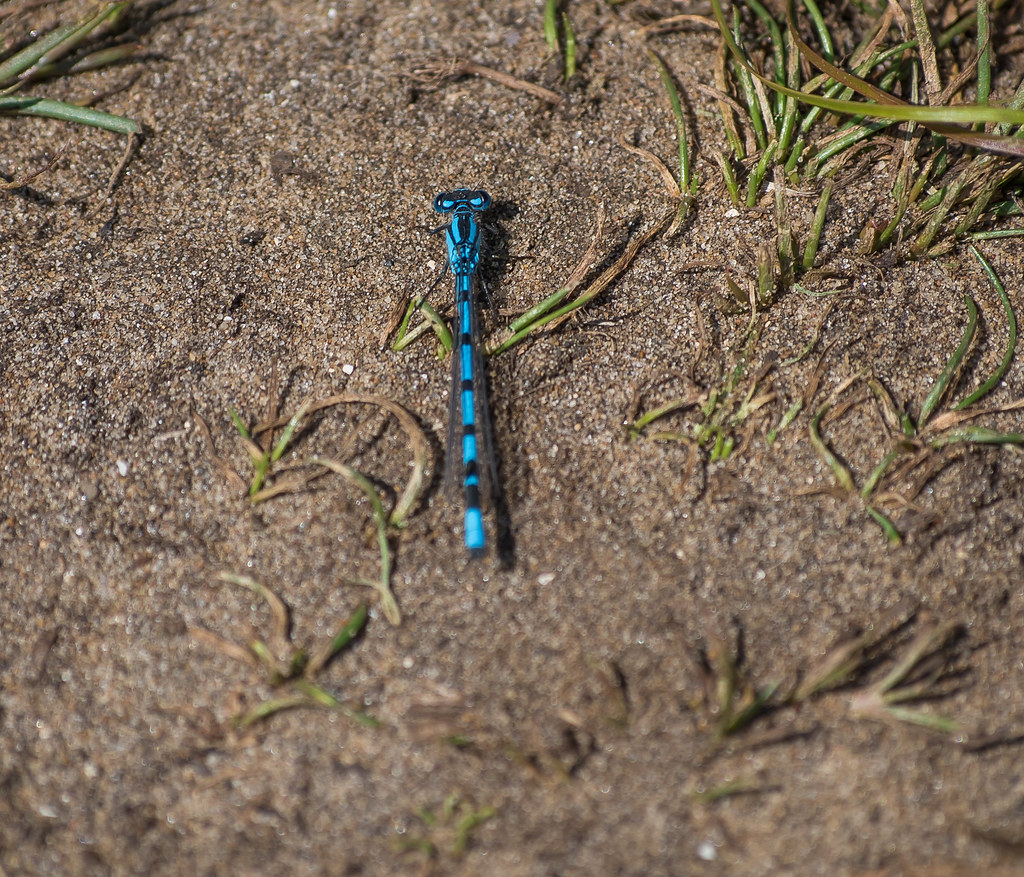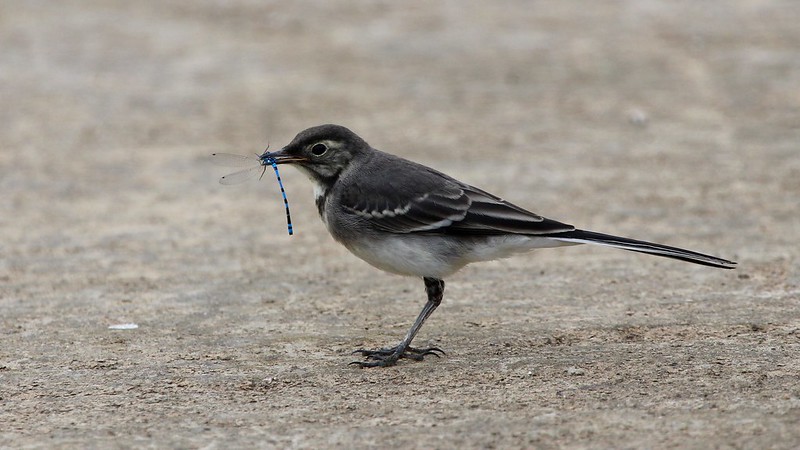Dragonflies and damselflies are fascinating camera subjects but good fieldcraft is essential to get good photos. Approach slowly and carefully with no sudden movements. Watch your feet as well as they have excellent peripheral vision. They are not as sensitive to blocking the sunlight by your shadow as butterflies but it's still a good idea to avoid it if you can. Move the camera slowly to the eye when ready to take the shot. As with many live subjects, get down level with the insect, using live-view if necessary. If you want to get the whole insect in sharp focus, carefully shift your angle of approach to line up parallel to the length of the insect. For record/identification shots a top-down photo is often the best but side-on shots tend to make nicer images. Aim to focus on the eye - if you can get the whole insect sharp, all well and good but the eye has to be sharp. If you make no sudden movements you can often approach very close indeed, and once you're within a certain distance, about a foot or so, you'll find that there is a sort of circle of confidence inside which they completely ignore you. Different species have different tolerance levels so you'll need to learn which works with what. Common darters for instance will fly up when disturbed but will settle quickly. Windy weather can often be useful as they will find shielded areas out of the wind and collect there. As the sun goes down they will bask on higher vegetation, giving opportunities to catch them against a clear background.
If it's overcast, then it's probably better to look for other subjects as they are creatures of the sun. If the sun shines then they will fly in surprisingly cool conditions.
One thing that dragons do that butterflies do not is hover. When hawking a patch of territory or holding an area of water they will sometimes pause during flight and allow an in-flight shot if you're quick.
Mike (UK Dragonflies)
 Blue Damselfly by Simon Rees, on Flickr
Blue Damselfly by Simon Rees, on Flickr Blue Damselfly by Simon Rees, on Flickr
Blue Damselfly by Simon Rees, on Flickr

